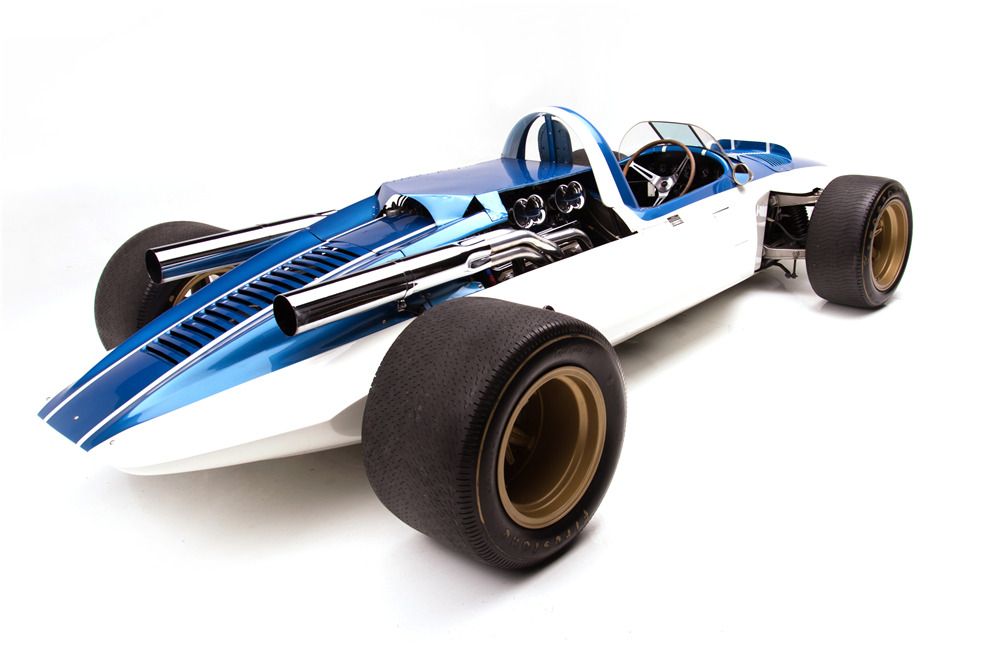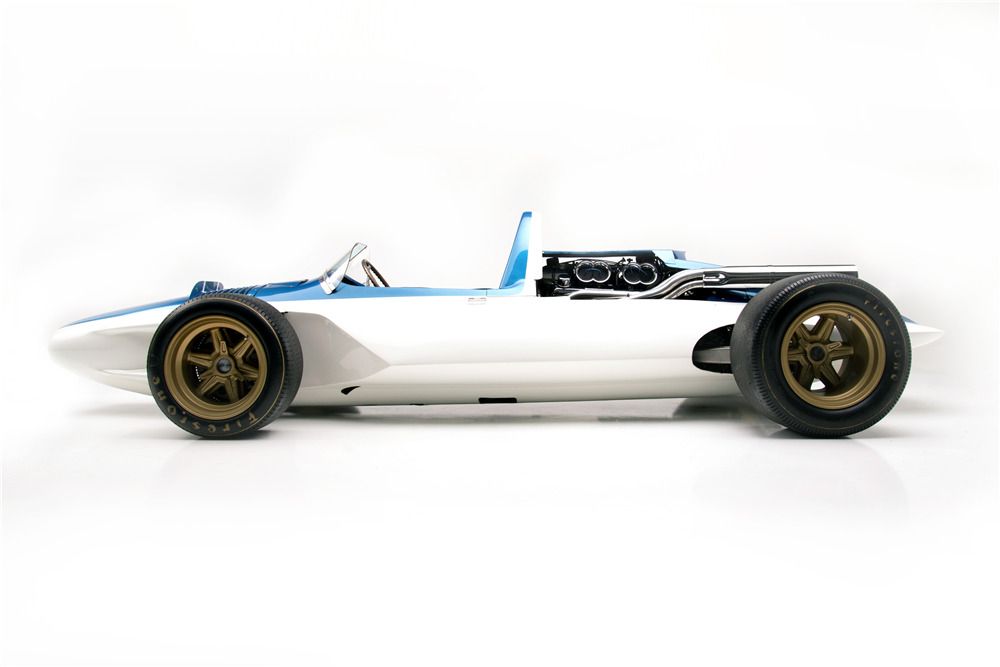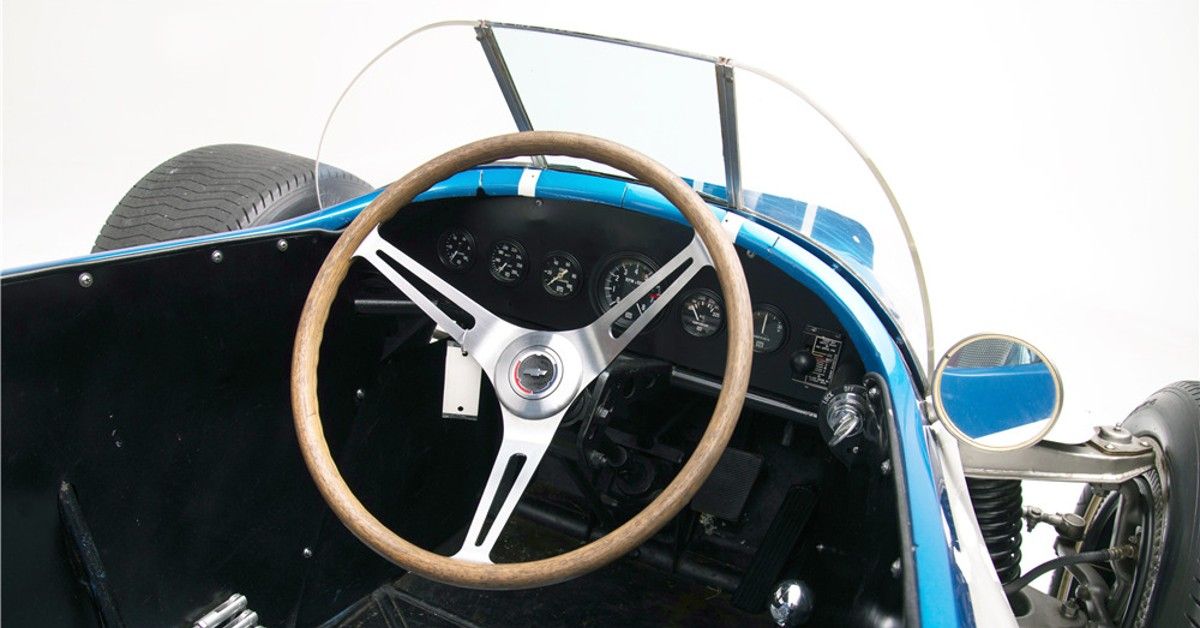Everything You Need To Know About The 1960 Chevrolet CERV 1
The automotive industry knows the 1960 Chevrolet Engineering Research Vehicle (CERV 1) as one of the most important four-wheeled machines in the history of automobiles in America. CERV 1 was a research project undertaken by Chevrolet designer, engineer, race car driver, and the man who would later get known as the godfather of the Corvette, Zora Arkus-Duntov. Duntov’s team included Chevy engineers Walt Zetya and Harold Krieger.
CERV 1 should provide more insight into the dynamics of a vehicle’s ride and handling. When Duntov finally unveiled the multipurpose two-seater racing car in 1960, it did some demo laps at the US Grand Prix that year and achieved a top speed of 206 mph. It used a four-speed manual transmission with independent suspension all around and front disc/rear drum brakes.
We said multipurpose because CERV 1 – designated internally as the “R Car” – served as a rolling test-bed for Chevrolet engineers to experiment, test, and develop new powertrain and design technology. Now you understand why what seemed like an old relic fetched $1.2 million at auction. Bidders wanted the chance to own an important piece of not just GM, but America’s automotive history. Let’s dig in.
The CERV 1 Was Zora Arkus-Duntov’s Baby
Test vehicles come and go, but Duntov’s 1960 CERV 1 is inarguably one of the most significant and celebrated. As Harley Earl was the father of the Corvette, Duntov’s CERV1 might as well be the father of the modern Corvette. The car broke the sales record at auction to become the most expensive Chevrolet automobile ever sold at the time. To Duntov and his team of engineers, the project would give them the unique chance to have a functional rolling test bed with which to push the limits of automotive research and development.
It used an ultra-lightweight frame and body unrivaled by any to come out of Detroit at the time, while ensuring it had the right dimensions to race the Indy 500. The automaker would be eyeing Pike Peaks soon enough. The team is incomplete without mentioning designers Tony Lapine and Larry Shinoda, the same crackerjacks that went on to make history – together and separately – with Bill Mitchell’s Stingray racer and beyond. Lessons gleaned from the CERV 1 would later get applied to the 1963 Stingray.
They used a 125-lb chromium-molybdenum steel tubular space frame and wrapped it in a fiberglass body that contributed a mere 80 lbs, all of which helped relieve the car of more than 175 lbs. How fast do you reckon a feather like that should go? How does 324 horsepower sound? That was an initial figure produced by a mid-positioned aluminum experimental V8 engine cranking out 6,500 rpm. That’s enough propulsion power, but the CERV 1 was all about pushing the limits.
So, Duntov had the engine modified (a 377 cubic inch aluminum small block using an upgraded version of the Rochester fuel-injection system) to produce a massive 500 horsepower at 6,000 rpm, making it the most potent and inspiration for many more GM supercars for years to come. Notably, Duntov would not become Corvette’s chief engineer until seven years later.
Arkus-Duntov’s 1960 CERV 1 Fetched $1.32 Million At A Barrett-Jackson Auction
After running its course as a research vehicle developed to help General Motors build sports coupes with better suspension and drive line components, the CERV 1 went under the hammer at the Barrett-Jackson auction in Scottsdale, Arizona. Duntov himself was behind the wheel during the demo laps at the US Grand Prix in 1960. The short track time and the fact that it had only changed private owners twice meant the CERV 1 was in great condition when revealed at Arizona’s WestWorld of Scottsdale on January 14, 2017.
Why such a short stint on the racetracks? Because it was purpose-built for racing, without minding what racing regulators had to say. That’s why the CERV 1 never raced officially, despite having the dimensions suitable for Indy. Additionally, it was just around the time of GM’s self-imposed ban on racing as well as the now-defunct Automobile Manufacturers Association (AMA) ban on racing following the terrible 1955 Le Man accident that claimed 77 lives and injured many more.
The CERV 1 would probably have fetched more dollars with bruises sustained on the track. It was Barrett-Jackson’s 46th annual Scottsdale auction and the car fetched $1.2 million ($1.32 million including buyer premium), a small price to pay to own a car developed and driven by the godfather of the Corvette himself.
The 1960 Chevrolet CERV 1 In Detail
The CERV 1 was the first of four such research vehicles produced by Chevrolet in a span of thirty years. Duntov and his secretive Lockheed Skunk Works-like engineering and design team developed the CERV 1 between 1959 and 1960, at the end of which they had a high-performance mid-engined open-wheel mid-single-seat race car prototype.
The AMA ban on manufacturer-sponsored racing may have reduced the prototype’s racing career to a few laps at the 1960 Grand Prix driven by Duntov himself, but it didn’t put a dent in the car’s primary purpose as a test bed for Chevy engineers to sharpen the aerodynamics, chassis, and suspension systems of Chevy production cars. The ban also didn’t stop the CERV 1 from leaving impressive track records at the 1960 Grand Prix during its demo laps.
Arrayed in crisp white and blue, Duntov’s CERV 1 didn’t look much different from the cars that would later dominate the Indy and F1 races in the 1960s. In fact, one might argue that the test-bed justification was an afterthought due to the AMA ban preventing it from racing its own cars. Be as it may, it is generally believed that the research vehicle formed the basis of the development of Chevy’s fuel-injected line of small-block engines, the first Grand Sport engine, as well as the 1963–1982 Corvette suspension system.
Duntov positioned the 283 cubic-inch Rochester fuel-injected V8 just behind the CERV 1’s cockpit. As stated earlier, Duntov had the mill modified into a 377 cubic-inch V8, with the Rochester fuel injection system modified as well to produce 500 horsepower. The narrow tires on the initial iteration gave way for wider wheels and tires to match the subtly Shinoda-restyled body, intended to enhance aerodynamics.
With its research purposes seemingly exhausted, GM had the CERV 1 broken up and scrapped, which would’ve been the end of it if Duntov hadn’t convinced GM to restore and keep the car in storage. Chevrolet replaced it with the CERV II in 1964.
Sources: Barrett-Jackson, Story-Cars, Concept Carz











